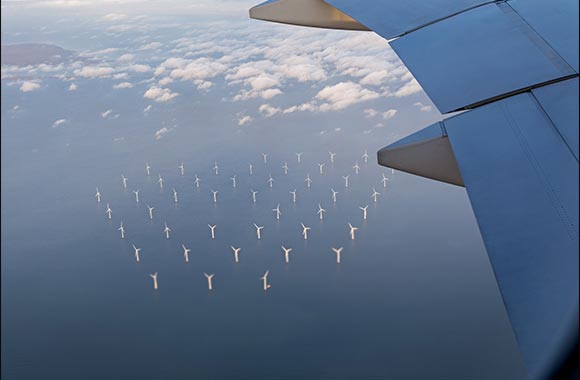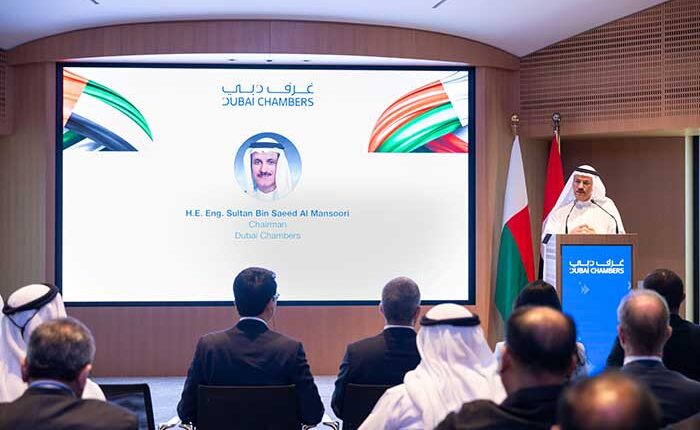Aviation plays a crucial role in connecting people and places all around the world. As extreme weather events become more frequent and intense across the globe because of climate change, airports, aircraft, and flight operations are increasingly vulnerable.
The impact of climate change on aviation
The aviation industry has recognized the urgency of addressing climate change and has committed to achieving carbon net-zero by 2050. In support of the Paris Agreement's goal of limiting global warming to 1.5°C, the industry has a four-pronged strategy to curtail emissions . Regional governments such as the UAE and Saudi Arabia are investing heavily in clean energy solutions to help achieve net-zero by 2050 and 2060 respectively.
Climate change has also resulted in a rise in extreme weather events, including severe flooding, rising sea levels, and more frequent hurricanes. The Middle East region is particularly at threat due to higher temperatures and has already witnessed the impact of climate change in recent years and months.
These weather events have a significant impact on aviation operations.
Delays and disruptions caused by weather conditions account for 75% of air traffic delays , costing airlines billions of dollars each year in extra fuel, maintenance, crew, and compensation expenses. Moreover, the safety of passengers and crew members is compromised when unexpected weather events occur, such as clear-air turbulence (CAT) which is invisible and difficult to forecast ahead of a flight.
In fact, recent research published this summer from the University of Reading shows a significant increase in CAT over the past four decades due to the warming climate. As the climate gets warmer, CAT will inevitably increase. At COP28 in November this year in Dubai, world leaders will gather to address how to tackle climate change, the biggest challenge the world faces today.
The role of technology in weather visibility
Today, when pilots fly over an area with unexpected CAT, they typically report the occurrence (as a PIREP or Pilot Report) during the flight or after the flight to ground operations, who then communicate it further so that other aircraft flying in that area can avoid it.
To proactively address weather disruptions like CAT, the industry needs more advanced tools that provide greater weather visibility to anticipate these occurrences.
Pilots and dispatchers require high-quality, real-time weather visualization to support flight safety, adapt flight plans, and avoid increasing adverse weather conditions. We know that weather is one of the biggest challenges pilots face. Dispatchers rely equally on weather information because they produce flight plans for pilots factoring in weather and fuel needed to reach a destination, and they are responsible for anticipating flight diversions and determining cancellations when there are safety concerns.
Traditional on-board radar systems detect turbulence but not CAT. As different forecasts excel in specific areas, reliable and accurate weather forecasts and observations from various sources enables pilots and dispatchers to anticipate and avoid hazardous weather (including potential CAT occurrences), thereby reducing risks and improving safety.
Innovative ways forward
As a leading IT provider for aviation, SITA has developed solutions to help the industry address these weather-related challenges. SITA eWAS and SITA Mission Watch offer unique capabilities that aggregate multiple weather feeds, ensuring accuracy and reliability in weather forecasts. These solutions provide pilots and dispatchers with high-resolution, real-time, 4D weather forecasts, enabling them to visualize flight plans over weather conditions. The user-friendly interface incorporates vital information such as aircraft position, observed fuel use, and pilot reports which can include CAT observations.
By equipping aviation professionals with this comprehensive weather visibility, SITA's solutions empower them to proactively determine the best flight paths and reduce the time aircraft spend on the ground due to adverse weather conditions by up to 60%.
Integration and synergy for optimal efficiency
SITA's solutions are designed to seamlessly integrate with other flight efficiency solutions, such as SITA OptiClimb®. By leveraging machine learning algorithms, SITA OptiClimb® provides tail-specific, customized climb-out speed recommendations for each flight, resulting in fuel cost and carbon emissions reductions of up to 5%. The compatibility of SITA eWAS and SITA Mission Watch with such innovative solutions enables airlines to achieve greater operational efficiency while cutting emissions.
Building climate resilience
As the aviation industry commits to carbon net-zero by 2050, addressing the impacts of climate change on operations becomes a crucial priority to mitigate the climate risks posed by extreme weather events. By leveraging the latest technologies to increase situational awareness for proactive decision-making, the industry can navigate these challenges for safer, more efficient travel.













